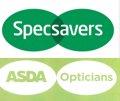Older use of color relevant for the assessment of the likelihood of confusion or unfair advantage
18-09-2013 Print this page
Genuine use of registered trade mark used only in conjunction with a word mark which is superimposed over it is possible, to the extent that the differences between used and registered do not change the distinctive character.
"31. In view of all the foregoing considerations, the answer to the first three questions isthat Article 15(1) and Article 51(1)(a) of Regulation No 207/2009 must be interpreted as meaning that the condition of ‘genuine use’, within the meaning of those provisions, may be fulfilled where a Community figurative mark is used only in conjunction with a Community word mark which is superimposed over it, and the combination of those two marks is, furthermore, itself registered as a Community trade mark, to the extent that the differences between the form in which that trade mark is used and that in which it was registered do not change the distinctive character of that trade mark as registered."
Fact that significant portion of public associates a color with third party is relevant for the global assessment of (i) likelihood of confusion, (ii) unfair advantage or (iii) allegedly infringing sign
"50 The answer to the fifth question is, therefore, that Article 9(1)(b) and (c) of Regulation No 207/2009 must be interpreted as meaning that the fact that the third party making use of a sign which allegedly infringes the registered trade mark is itself associated, in the mind of a significant portion of the public, with the colour or particular combination of colours which it uses for the representation of that sign is relevant to the global assessment of the likelihood of confusion and unfair advantage for the purposes of that provision.
48. Therefore, in the main proceedings, the fact that Asda is itself associated with the colour green, which it uses for the signs alleged to infringe the trade marks of the Specsavers group, could, inter alia, result in a reduction of the likelihood of confusion or association between those signs and the trade marks of the Specsavers group, to the extent that the relevant public could perceive that the colour green of those signs is that of Asda, a matter which is to be determined by the referring court.
49. Secondly, as the Commission argued in its observations before the Court, the fact that the third party making use of a sign which is alleged to infringe the registered trade mark is itself associated, in the mind of a significant portion of the public, with the colour or particular combination of colours which it uses for the representation of that sign can be relevant to determining whether the use of that sign has a ‘due cause’ within the meaning of Article 9(1)(c) of Regulation No 207/2009."
IPPT20130718, CJEU, Specsavers v Asda
C-252/12 - ECLI:EU:C:2013:497

















